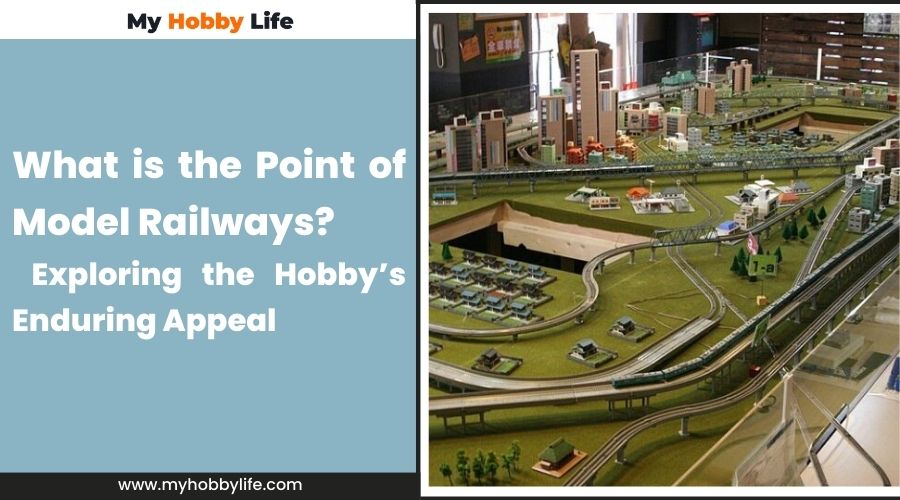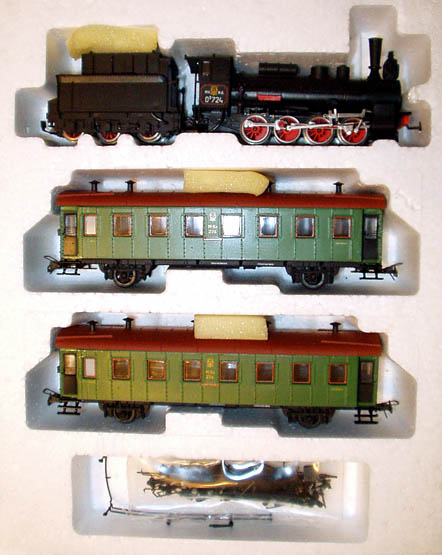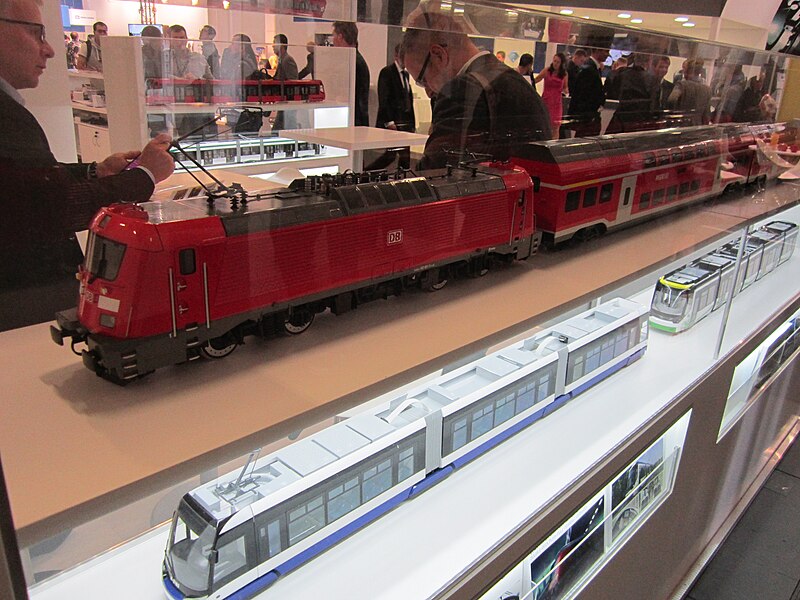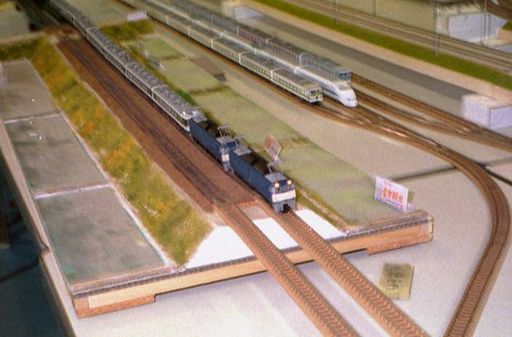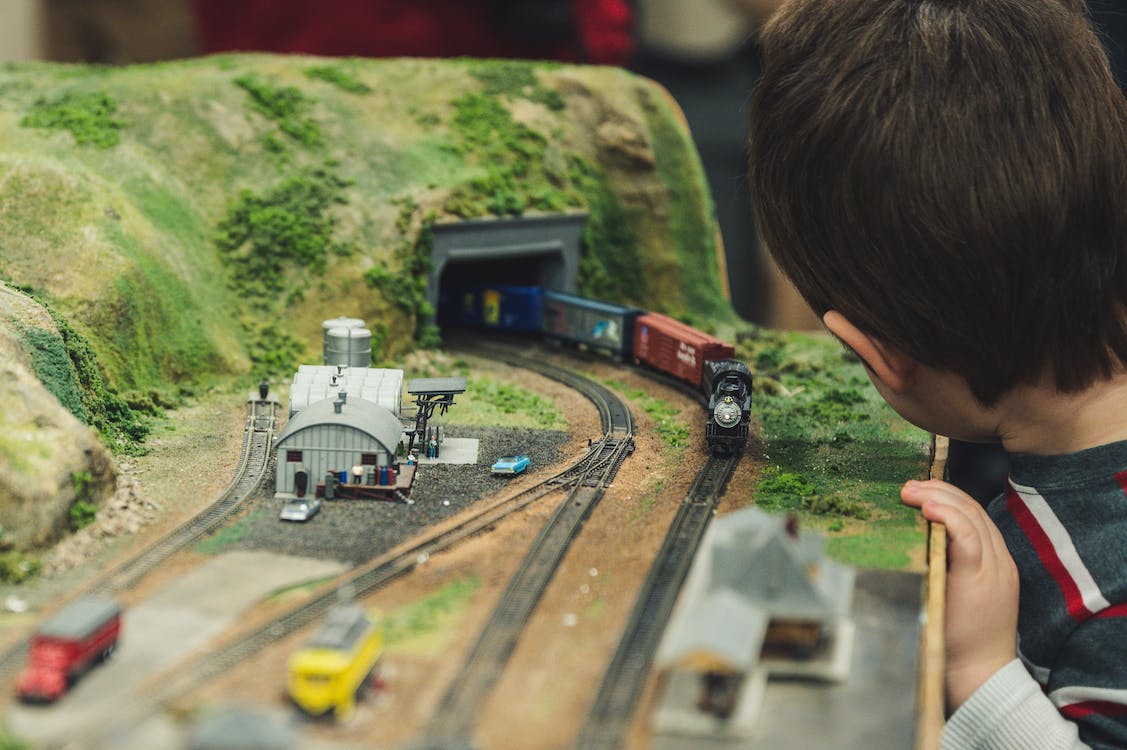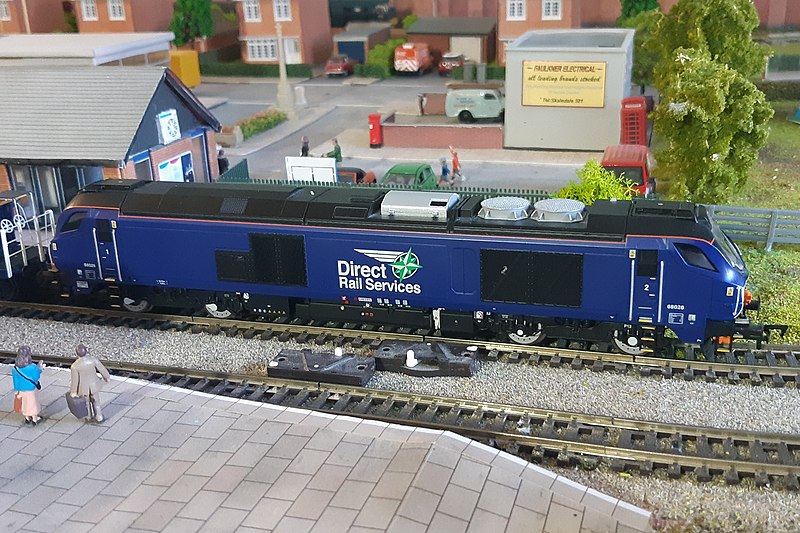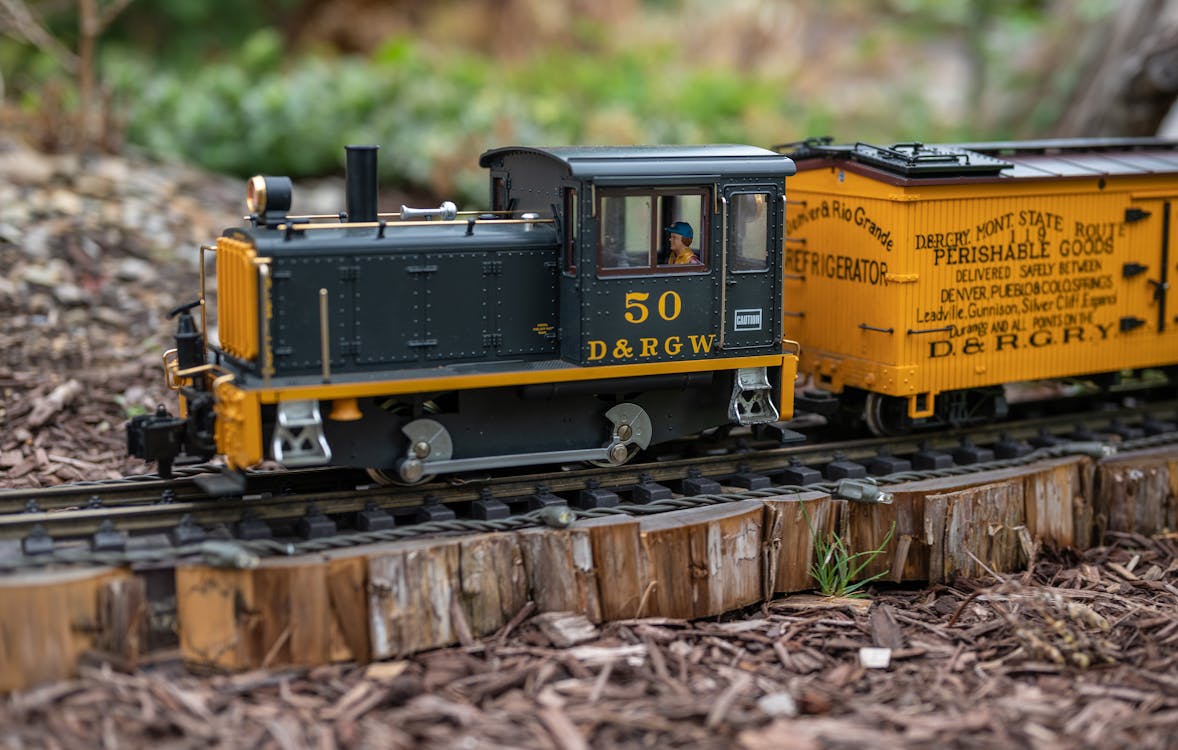Model railways represent a microcosm of rail transport systems, where scale models of trains operate on miniature tracks. Their origins trace back to the early 19th century with innovations attributed to pioneers like Sir William Stanier. Since then, model railways have evolved into a rich hobby combining craftsmanship, electronics, and historical research. They encapsulate the history and operations of real railways, presenting them on a smaller scale that enthusiasts can interact with and display.
The purpose of model railways extends beyond mere collection or display. They serve as an educational tool, offering insights into the engineering and logistical challenges of managing a rail system. Through the careful planning and building of these models, enthusiasts develop a deeper understanding of railway history and operations. Additionally, the community aspect of this hobby, where enthusiasts gather to share knowledge and showcase their models, fosters a sense of camaraderie and collective appreciation for the railroading legacy.
Model railways also provide a creative outlet for hobbyists to express themselves. Whether recreating historical scenes or imagining modern-day scenarios, they offer an opportunity for personalization and storytelling. The attention to detail required in constructing accurate scale models is a testament to the dedication and skill of the modelers. Thus, model railways continue to be a captivating hobby that encapsulates history, encourages learning, and promotes creativity among individuals of all ages.
The History and Evolution of Model Railways
The art and craft of model railways have a rich history, evolving from simple steam-powered miniatures to the intricate and technologically advanced replicas seen today, reflecting various scales and periods in railway history.
Origins and Development
The earliest inception of model railways dates back to the early 19th century, with Sir William Stanier being credited for creating the first known steam-powered miniature locomotive during the late Victorian or early Edwardian era. Initially, these miniature railways served both as representations of burgeoning engineering feats and as playful amusements for the wealthy.
During the 20th century, the hobby gained traction. Notable milestones include the introduction of various scales such as O gauge, which is notable for its larger size (1:48 scale in the US), and HO gauge, which offered a more manageable size at a 1:87 scale, allowing enthusiasts to build more detailed layouts in smaller spaces.
Model Railway Scales and Gauges
| Scale | Gauge | Ratio | Notes |
|---|---|---|---|
| O | 1.25″ | 1:48 | Compatible with larger layouts |
| HO | 0.65″ | 1:87 | Most popular due to size and detail |
| N | 0.35″ | 1:160 | Ideal for compact spaces |
The category of model railway scales and gauges is diverse, with three notable examples being O, HO, and N scales. Each scale serves a different type of modeller:
- O scale offers a large canvas for intricate detailing,
- HO scale achieves a balance between size and detail, making it quite popular globally,
- N scale caters to those with limited space, enabling complex layouts in smaller areas.
Within the UK, a well-known scale is the 4mm scale, which corresponds to the popular OO gauge and aligns closely with the British railway modelling standards.
Technological Advancements
The evolution of model railways is marked by significant technological advancements. The oldest working model railway, designed for training signalmen on the Lancashire and Yorkshire Railway, indicates the practical use of these models in professional contexts. Today, enthusiasts enjoy highly detailed models that incorporate digital technologies for realistic operations. This includes digital command control (DCC) systems that facilitate the control of multiple locomotives on a single track and intricate details that accurately mirror their real-world counterparts.
Understanding Model Railway Systems
In the realm of model railways, the core functionality and interaction with the system is mediated through control setups and wiring configurations. Both novices and seasoned enthusiasts must comprehend the basics of model railway systems to ensure their setup functions properly and is capable of evolution over time.
Analog vs. Digital Control Systems
Model railways operate on either analog or digital control systems. Analog systems, the traditional method, use a transformer to regulate the voltage supplied to the track, directly influencing the speed and direction of the train. Train movements are manually controlled and the simplicity of wiring makes it a good starting point for beginners in model making.
In contrast, Digital Command Control (DCC) systems offer a more sophisticated approach. They allow multiple trains to be controlled independently on the same track by sending unique digital commands to decoders installed in each locomotive. DCC setups require more complex programming but afford greater versatility and control for advanced operations.
Wiring and Electrical Basics
Effective wiring is crucial for any model railway to function. Two factors to keep in mind are:
- Power Supply: A reliable power supply is needed to maintain consistent operations. For analog systems, this typically involves a transformer reducing household voltage to a safe level for model trains. For DCC, the power supply is integrated into the command station, distributing power and digital signals through the rails.
- Solenoid Switches: Often used for turnouts and signal control, solenoid switches use brief electrical pulses to switch states. Proper wiring is especially important to ensure these components operate smoothly.
Significance of DCC Systems
DCC systems have transformed model railways by providing a level of detail and control akin to actual train operations. They facilitate:
- Advanced Programming: Users can set locomotive addresses, configure acceleration and deceleration rates, and manage accessory functions.
- Solenoid Decoders: These are used for accessory control, enabling features such as automated turnout control and signaling systems.
- Scalability: DCC systems allow for the easy expansion of model railway setups due to their flexible wiring and control schemes.
Embracing the technicalities of model railway systems can significantly enhance the model railroading experience. Whether one opts for the simplicity of analog or the advanced capabilities of DCC, a strong grasp of these systems is instrumental in building a dynamic and functional model railway.
Constructing the Layout
Constructing a model railway layout is an intricate task that combines creativity with technical skills. It involves making detailed plans for track placement, integrating realistic scenery and structures, and ensuring the electrical circuitry functions properly.
Design Principles
When they design a model railway layout, enthusiasts follow certain principles to ensure functionality and aesthetics. The initial step typically involves deciding on a scale and era, as this will dictate the size of the models and types of trains. A well-thought-out track plan is crucial—it’s imperative that curves are the correct radius to accommodate the model trains and that points (also known as turnouts) allow for smooth navigation. Efficient space management is also essential, as model railways often have limited space in which to represent expansive real-world tracks.
Scenery and Structures
The scenery is what brings a model railway to life, providing context and making the layout feel more realistic. They construct buildings, trees, vehicles, and figures from a variety of materials like plastic, wood, and metal. The goal is to mirror the chosen era and geographical setting as closely as possible. Attention to detail in the structures—such as stations, bridges, and tunnels—is key for a truly immersive experience.
Tracks and Circuitry
The tracks form the backbone of any model railway. Modelers carefully lay out tracks based on the design plans, ensuring that all elements such as straights, curves, points, and crossings match the schematic. The circuitry is equally important; proper wiring ensures that the trains run smoothly and that they can control points and signals accurately. Here’s a brief overview of track components:
- Strights: The linear sections where trains can pick up speed.
- Curves: These must have the correct radius to prevent derailments.
- Points/Turnouts: They allow trains to switch from one track to another.
- Crossings: Where two tracks cross, often controlled by signals.
In constructing the layout, reliability and functionality take precedence to enable the smooth operation of the model railway.
Operating Model Railways
In model railway operations, enthusiasts simulate real-world train running scenarios, utilizing control panels for coordination and implementing strict maintenance practices for reliability.
Control Panels and Operation
Control panels serve as the nerve center for model railway operations. They provide operators with the ability to control various aspects of the layout, from train movements to track switching. The typical control panel includes toggles or push buttons that directly operate point motors—the mechanisms that move the rails at junctions, allowing trains to switch tracks. Point motors can vary in type, from the robust solenoid point motors to more sophisticated motor-driven models that offer smoother transitions. For larger or more complex layouts, a lever frame system might be employed, echoing the mechanical signal boxes of full-sized railways.
- Point Motor Types:
- Solenoid
- Slow-action motor
- Servo based
- Control Options:
- Manual toggles
- Push buttons
- Computer-assisted panels
Maintenance and Reliability
Reliability is critical in model railway operation. Regular maintenance of point motors and tracks ensures that operational delays and equipment failures are minimized. Model railway maintenance generally requires routine cleaning of the tracks to prevent electrical connectivity issues, along with the lubrication of moving mechanical parts, like the gears within a point motor, to keep everything functioning smoothly. Each point motor’s reliability will depend on its design: solenoid point motors may be prone to more abrupt movements but are often simpler and therefore more robust, while slow-action motors provide a more realistic movement at the potential cost of intricate mechanical reliability.
- Maintenance Best Practices:
- Clean tracks regularly.
- Lubricate mechanical components.
- Check electrical connections.
- Ensuring Reliability:
- Test point motors frequently.
- Conduct regular operational checks.
- Replace worn-out parts promptly.
The operation and maintenance of model railways call for a balance of technical skill and creative problem-solving, ensuring that these miniature worlds keep running smoothly and reliably.
Model Railways as a Hobby
Model railways serve as both a creative outlet and a means for acquiring a diverse set of skills. They represent a blend of artistic and technical disciplines that can appeal to a wide range of enthusiasts.
Community and Societal Impact
Model railways foster a strong sense of community among enthusiasts. Clubs such as the National Model Railroad Association and the 009 Society provide platforms for hobbyists to collaborate, share their passion, and disseminate knowledge. These organizations often hold events and exhibitions which have a broader societal impact by bringing people together and promoting a sense of camaraderie.
- The 009 Society specializes in narrow-gauge model railroading, uniting fans of this specific niche.
- Websites like modelrailwayengineer.com act as valuable resources where hobbyists can engage with others and share content including photos and how-to guides.
Educational and Skill Development
Engaging in model railway construction can lead to a significant development in both educational and practical skills.
Skills obtained through model railing include:
- Basic Carpentry: Cutting and assembling the physical layout requires precise work with materials like wood.
- Electrical Skills: Wiring the tracks and scenery involves soldering and understanding electrical circuits.
- Artistic Skills: Scenery creation and painting require a finesse akin to diorama building, cultivating an eye for detail and design.
- Photography: Documenting the finished models is an art form itself, with techniques to showcase the models in their best light.
Not only do these skills enrich the hobbyist’s expertise, but they also have applications in real-world scenarios, making model railways an investment in one’s personal development. Hobbyists associated with organizations like MERG (Model Electronics Railway Group) can delve deep into the electronics aspect, enhancing their knowledge and contributing it back to the community.
Innovations and Trends
Model railways have seen significant advancements in technology and aesthetic design, leading to increasingly sophisticated and detailed layouts.
Integration of Technology and Automation
In the realm of model railways, technology has vastly enhanced the user experience. Digital Command Control (DCC) systems have revolutionized train operation, allowing enthusiasts to operate multiple locomotives independently on the same track circuit. This has been achieved through the integration of programming and automation, which has enabled a level of control and realism previously unattainable in the hobby. The incorporation of computer interfaces facilitates advanced operations such as the simulation of real-world train schedules, automated switching of tracks, and coordination of accessories.
Technological Trends in Model Railways:
- Advanced Control Systems: Utilization of DCC for precise control.
- Smartphone Integration: Using mobile apps for remote operation.
- Programmable Scenarios: Implanting complex operational scripts.
Creative Applications with Dioramas and Miniatures
Model railway enthusiasts have long enriched their layouts with dioramas complete with realistic scenery, buildings, and figures. In recent years, there has been a surge in the use of sci-fi and fantasy figures to create unique, themed environments. This blend of traditional model railroading with elements of science fiction and fantasy allows for dynamic storytelling within the dioramas. Additionally, miniatures have become more intricate, with detailed painting and weathering techniques used to create lifelike scenes that evoke a sense of place and time.
Diorama and Miniatures Trends in Model Railways:
- Themed Environments: Incorporation of fantasy and sci-fi elements.
- Detailing Miniatures: Enhanced painting and weathering for realism.
- 3D Printing: Use of technology to create custom figures and scenery pieces.
Advancing Your Model Railway Experience
As enthusiasts seek to enhance their model railway experience, they often turn to reliable resources for information and consider upgrades to their current setup. Knowledge and equipment play pivotal roles in elevating the hobby from a basic setup to an intricate model railway system.
Resource and Information Access
A key factor in advancing one’s model railway experience is access to high-quality resources and information. Enthusiasts are encouraged to frequent reputable websites such as modelrailwayengineer.com, which provides a wealth of knowledge on various topics related to model railways. This website often acts as a gateway to deeper insights, offering guides, how-to articles, and product reviews.
- Newsletters: Subscribing to newsletters from trusted model railway websites can keep hobbyists updated with the latest techniques, events, and offers.
- Communities: Online forums and social media groups allow for sharing experiences and troubleshooting with peers.
- Donations: Many resources are freely available, but enthusiasts can choose to support their favorite websites through donations, ensuring the continuance and expansion of quality content.
Upgrading and Enhancing Your Setup
Once a solid base of knowledge is established, hobbyists typically look to upgrade and enhance their railway models. This can involve buying new supplies, integrating advanced controls, and adding detailed scenery.
- Track and Accessories: Purchasing high-quality track materials and diverse accessories can improve the functionality and aesthetic appeal of the setup.
- Advanced Control Systems: Incorporating more sophisticated control systems enables a more realistic experience and finer management of the model trains.
- Scenery: Detailing the layout with realistic scenery, from buildings to natural landscapes, makes the model railway more visually engaging and authentic.
By accessing the right resources and carefully upgrading their setup, model railway enthusiasts can significantly advance their hobby to new levels of enjoyment and satisfaction.
Troubleshooting and Improvements
In model railways, maintaining smooth operations and implementing strategic enhancements are essential. This section discusses the resolution of technical complications and the upgrading of electrical systems.
Dealing with Common Technical Issues
When model railway enthusiasts encounter operational issues such as stuttering locomotives or sudden derailments, the underlying problems often relate to track connectivity or the point blades of railway points. Peco points are a popular choice for many, but they too can be subject to the same issues if not regularly maintained. Here are some specific steps to tackle these issues:
- Track Connectivity Issues: Ensure that all track sections are firmly connected. This prevents power loss and consequent train stuttering. Regular maintenance includes tightening any loose joiners and cleaning the rails to remove dirt and possible corrosion.
- Derailments: These are often due to misaligned track sections or faulty point blades. Regularly inspect and adjust the points, especially the tie bar and point blades, to ensure they are properly aligned and secured.
- Turnouts Troubleshooting: For electrical issues in turnouts, inspect for consistent polarity and proper switch operation. Solenoid point motors may sometimes require adjustments or a capacitor discharge unit (CDU) to ensure robust operation, preventing issues when switching the frog polarity.
Enhancing Model Railway Electrics
Improving a model railway’s electrical system can significantly enhance its performance and reliability. Here are targeted upgrades:
- Capacitor Discharge Units (CDUs): These can be added to minimize the stress on solenoid point motors during operation.
- Power Distribution Enhancement: For larger layouts or those with digital command control systems, incorporating a bus wire system with feeders to multiple track sections can ensure stable and consistent power supply.
- Polarity Switching: It is crucial in areas like crossovers and railway points to maintain the correct polarity. This may involve installing a wiring system that changes polarity dynamically as point blades switch position.
Paying close attention to these aspects of model railway operation and electrics ensures a well-functioning and visually pleasing setup.
Cultural and Geographical Influence
Model railways significantly reflect the cultural and geographical variances seen in real-life railroading practices and settings. These variations and historical accuracies are often meticulously represented within the world of model railroading, showcasing different regional preferences and historical periods.
Regional Model Railway Preferences
In regions like South West England, a distinct predilection for local railway lines can be observed in model railway communities. Rail enthusiasts in this area might focus on replicating the characteristic rolling stock and railway infrastructure indigenous to their locale. Hornby, a major player in the model railway industry, often caters to these regional tastes by producing models that specifically represent local locomotives, coaches, and freight cars.
- Southwest England Example:
- Locomotives: Replicas of the Great Western Railway steam engines
- Scenery: Coastal lines and rural landscapes typical of the region
The preferences can vary even broader when looking at the global scale, with North American modelers often favoring longer freight trains and diesel locomotives, and European modelers commonly depicting passenger services and a variety of international trains.
Representation of Historical Eras
Model railways serve as a window into past eras, particularly reflecting the transition from the late Victorian to the early Edwardian period. Enthusiasts can recreate historic scenes and famous locomotives from these times, often conveying the evolution of technology and railway design.
- Victorian/Edwardian Era Features:
- Locomotives and Rolling Stock: Prominent steam engines like the Flying Scotsman
- Infrastructure: Ornate stations and complex track layouts, signaling systems
Modelers pay close attention to the accurate representation of these eras, immersing themselves in historical research to ensure that every detail, from the livery of the coaches to the advertisements on period station platforms, authentically represents the time.
Frequently Asked Questions
The frequently asked questions section addresses common inquiries about the significance, benefits, and impact of model railroading as a hobby.
Why do people build model railroads?
Individuals build model railroads for various reasons, including the enjoyment of crafting a miniature world and the challenge of constructing intricate layouts. It’s a way to express creativity and technical skills in a tangible form.
What are the benefits of engaging in model railroading?
Engaging in model railroading can provide a therapeutic escape from the stresses of daily life. It also enhances one’s attention to detail, patience, and problem-solving abilities through the process of building and maintaining train layouts.
How do model railways serve as a hobby for enthusiasts?
Model railways serve as a hobby by offering a platform for enthusiasts to immerse themselves in a community with shared interests, to exchange knowledge, and to participate in events and exhibitions that celebrate their passion for railroading.
In what ways do model railways reflect historical significance?
Model railways offer a meticulous portrayal of historical trains and settings, allowing hobbyists to recreate and preserve the past. They serve as a three-dimensional record of railway heritage, technology, and evolution.
What are the educational aspects of model railroading?
Model railroading can be educational, introducing individuals to the principles of scale, electrical circuits, and landscape architecture. It often involves researching historical contexts and engineering concepts to achieve realism in the models.
How is the tradition of model train collecting and building sustained over time?
The tradition is sustained through the sharing of knowledge between experienced hobbyists and newcomers, the involvement of community clubs, and the passing down of model trains as heirlooms, ensuring the craft endures across generations.
